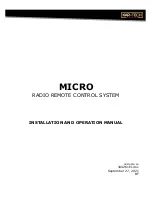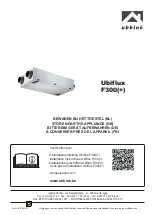
16
Basic information concerning the handling of magnetic lifting gear – in
particular TML / TMH
The magnetic surface is located on the underside of the lifting magnet incorporating different magnetic poles which
generate the magnetic holding force through magnetic flux when activated. The maximum holding force that can be
achieved depends on different factors which are explained below:
Material thickness
The magnetic flux of the lifting magnet requires a minimum material thickness to flow completely into the load.
Below this minimum thickness of material, the maximum holding force is reduced subject to material thickness.
Conventional switchable permanent magnets have a deeply penetrating magnetic field similar to tree tap roots,
and require a large material thickness to achieve maximum holding force. The compact magnetic field of TML and
TMH magnets is similar to a shallow root and achieves maximum holding force even when used on thin materials
(see performance data in table 2
)
.
Material
Every material reacts in a different way to penetration of the magnetic field lines. The load-bearing capacity of the
lifting magnets is determined using an S235 material. Steels with high carbon content or whose structure has been
changed by heat treatment have a low holding force. Foamed or porous cast components also have a lower
holding force, so that the given load-bearing capacity of the lifting magnet can be downgraded on the basis of the
following table 1.
Table 1
Material
Magnetic force in %
Non-alloyed steel (0.1-0.3% C content)
100
Non-alloyed steel (0.3-0.5% C content)
90-95
Cast steel
90
Grey castiron
45
Nickel
11
Stainless steel, aluminium, brass
0
Surface quality
The maximum holding force of a lifting magnet can be achieved in case of a closed magnetic circuit in which the
magnetic field lines can connect up freely between the poles, thus creating a high magnetic flux. In contrast to iron,
for example, air has very high resistance to magnetic flux. If an air gap is formed between the lifting magnet and
the work piece, the holding force will be reduced. In the same way, paint, rust, scale, surface coatings, grease or
similar substances all constitute a space (i.e. an air gap), between work piece and lifting magnet. Furthermore, an
increase in surface roughness or unevenness has an adverse effect on the magnetic holding force. Reference
values for your TMH 50
R
can be found in table 2.
Load dimensions
When working with large work pieces such as girders or plates, the load can partly become deformed during the lift.
A large steel plate would bend downwards at the outer edges and create a curved surface which no longer has full
contact with the bottom of the magnet. The resulting air gap reduces the maximum load-bearing capacity of the
lifting magnet. In contrast to this, nor should objects be hollow or smaller than the magnetic surface, as otherwise
the entire power of the lifting magnet will not be used.
Load alignment
During load transport care must be taken that the lifting magnet is always at the center of gravity of the work piece
and that load, or lifting magnet respectively, is always aligned horizontally. In this case, the magnetic force of the
lifter acts with its full pull-off strength at right angles in relation to the surface and the maximum rated load-bearing
capacity is achieved through the 3:1 standard safety factor. If the position of work piece and lifting magnet changes
from horizontal to vertical, the lifting magnet is operated in shear mode and the work piece can slip away to the
side. In shear mode, the load-bearing capacity decreases dependent upon the coefficient of friction between the
two materials.
Temperature
The high-power permanent magnets installed in the lifting magnet irreversibly lose their magnetic properties from a
temperature of more than 80°C, so that the full load-bearing capacity is never reached again even after the magnet
has cooled down. Please note the specifications on your product and in the operating manual.
















































